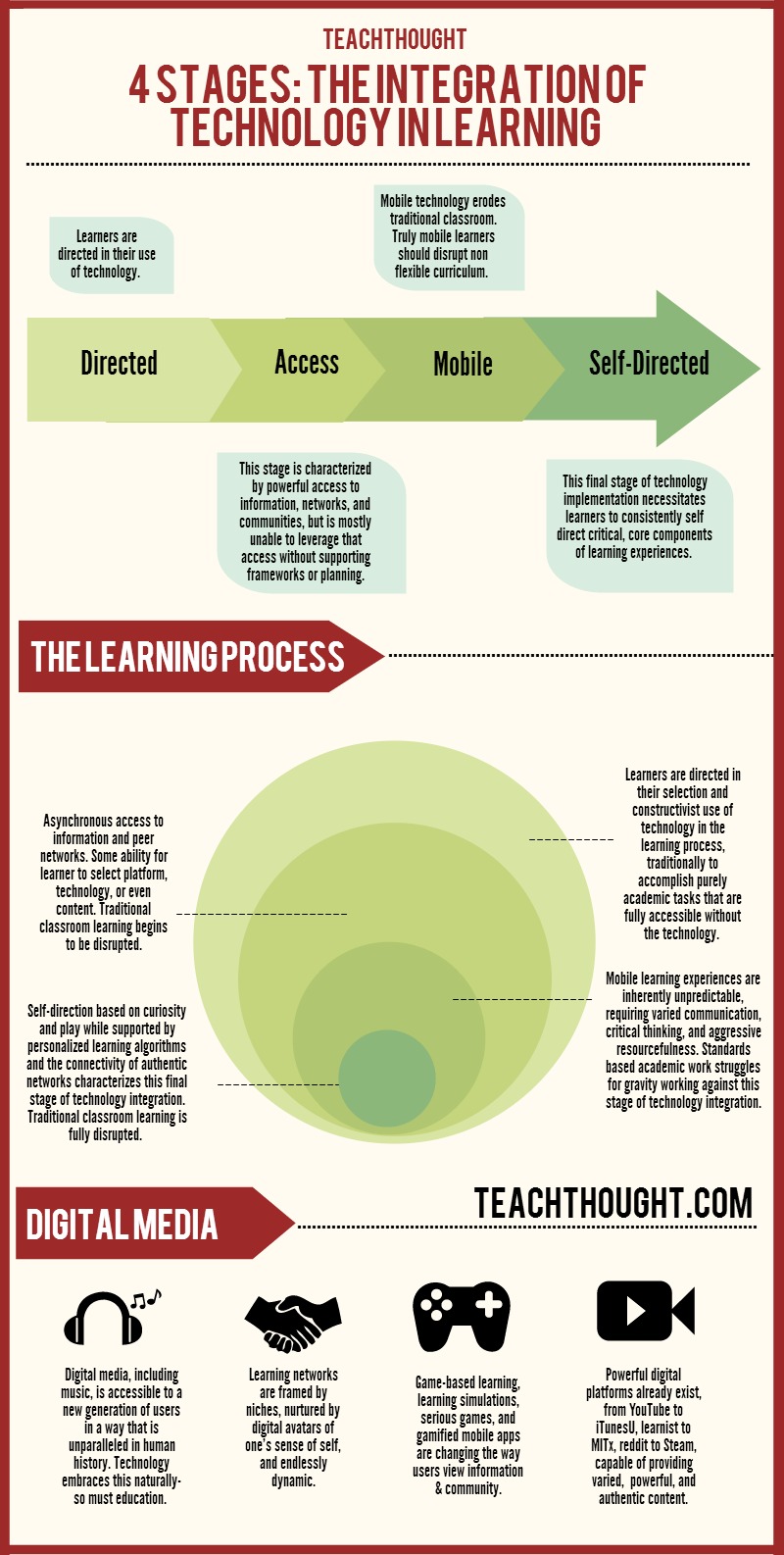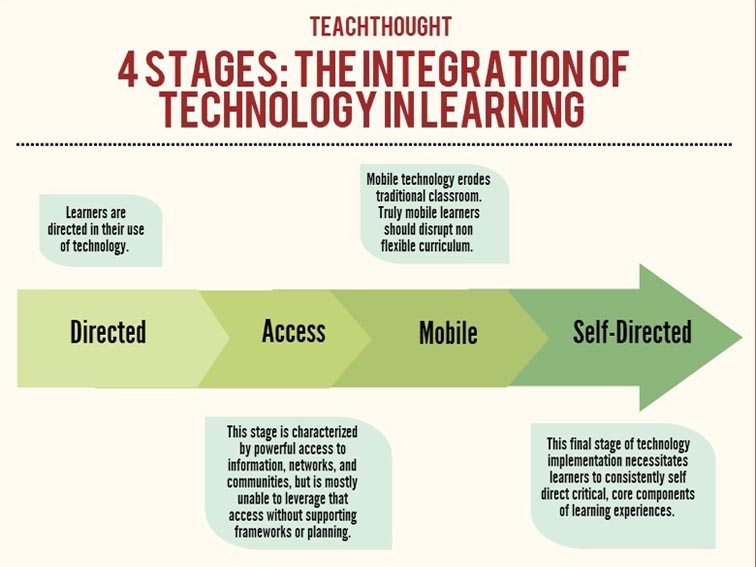What Does Edtech Integration Look Like From A Student Perspective?
by Terry Heick
Technology can be used in the learning process in a variety of ways.
Some are supplementary, serving the original design of the classroom and usually automate some previously by-human task or process–grading multiple choice assessments, searching for a source of information, or sharing messages and other data across large groups.
But fully integrated and embedded in the learning process, technology can be transformative–and disruptive. Below the idea of technology in learning is framed in stages, from “on learning” and externally-directed, to “in learning,” and self-directed. This is not to imply that stage 1 is “bad” and that learners should always be given free-reign with powerful technology. The age of graduated release of responsibility model (show me, help me, let me), as always, holds true here as well.
Scaffolding the learning of anything unfamiliar–somehow–is a way of supporting the learner and setting them up for long-term independent success. How to use this framework isn’t cut-and-dry.
Should elementary school be stage 1, middle school stage 2, and so on? (No.)
Should all learners begin a school year at stage 1 and move as far as they can towards stage 4? (Probably not.)
Can a planned learning experience be evaluated using this framework in mind? That is, understanding which stage the planned learning experience operates within and revising accordingly? (This sounds better.)
Can schools be designed differently with this approach in mind? From teacher professional development to funding and curriculum policies? (Hopefully, yes.)
And further, how can we begin to design learning so that it automatically scales to the available technology, the technical proficiency of that learner, and the personalized learning needs of the student? (Jackpot.)
The 4 Stages Of The Integration Of Technology In Learning
Stage 1: Learners are directed in their use of technology
Asynchronous access to information and peer networks. Some ability for learner to select platform, technology, or even content. Traditional classroom learning begins to be disrupted.
Stage 2: This stage is characterized by powerful access to information, networks, and communities, but is mostly unable to leverage that access without supporting frameworks or planning.
Learners are directed in their selection and constructivist use of technology in the learning process, traditionally to accomplish purely academic tasks that are fully accessible without the technology.
Stage 3: Mobile technology erodes traditional classroom. Truly mobile learners should disrupt non-flexible curriculum.
Mobile learning experiences are inherently unpredictable, requiring varied communication, critical thinking, and aggressive resourcefulness. Standards-based academic work struggles for gravity working against this stage of technology integration.
Stage 4: This final stage of technology implementation necessitates learners to consistently self-direct critical, core components of learning experiences.
Self-direction based on curiosity and play while supported by personalized learning algorithms and the connectivity of authentic networks characterizes this final stage of technology integration.


